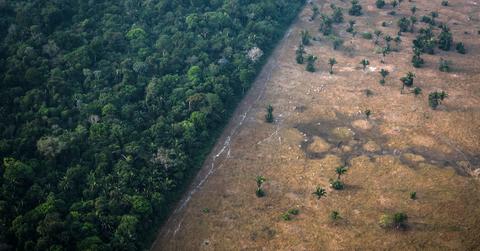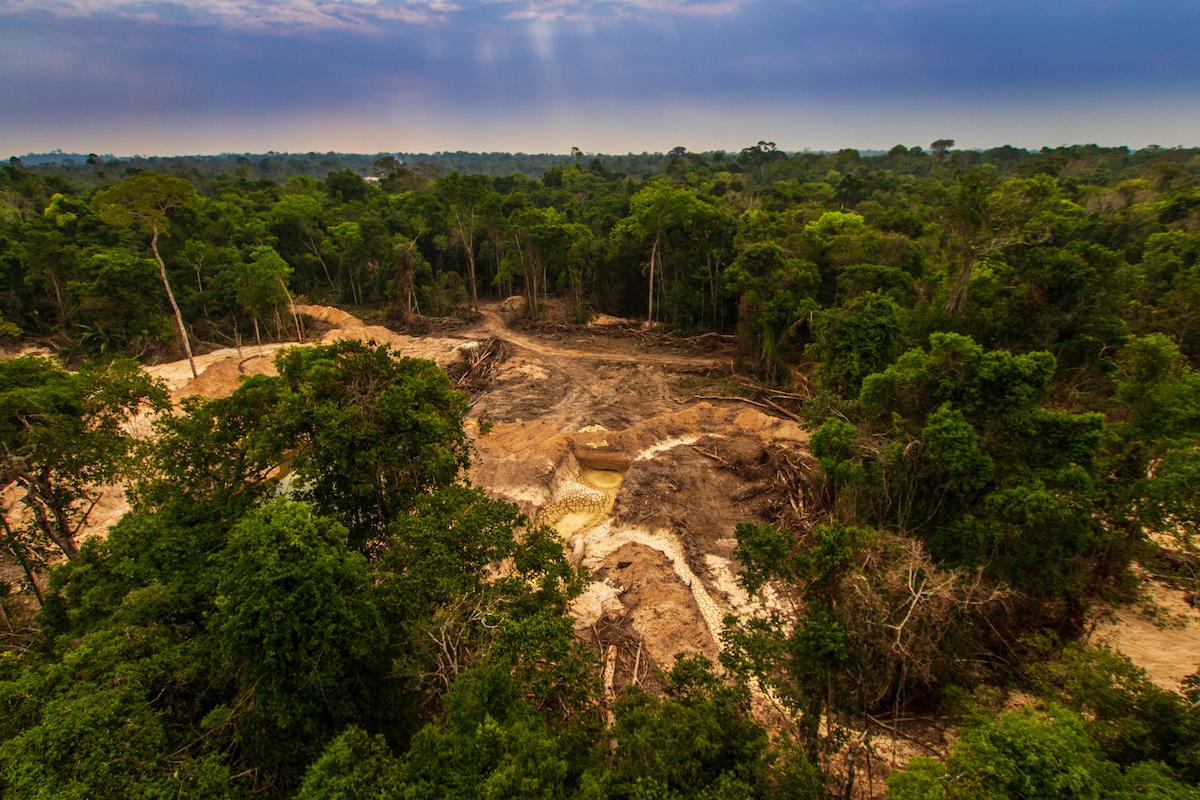Deforestation Could Turn 40 Percent of the Amazon Rainforest Into a Savanna
The Amazon rainforest could soon become the Amazon savanna — that is, 40 percent of it could, if we continue exploiting the planet at the going rate.
Updated Oct. 5 2020, 12:12 p.m. ET

The Amazon rainforest could soon become the Amazon savanna — and that would be devastating for our planet.
More specifically, by the end of this century, 40 percent of the Amazon could become savanna, aka a grassland or woodland, according to the findings of a computer models and data analysis study published in the journal Nature Communications on Oct. 5, 2020.
The researchers behind the study, who hail from Europe’s Stockholm University, Radboud University, Utrecht University, and Wageningen University, believe that if humans continue exploiting the Amazon (and the rest of the planet) at the going rate, rainfall rates will continue to go down, and fires and droughts will go up, causing 40 percent of the Amazon rainforest to gradually become a savanna. As of now, the researchers believe that the Amazon could “partially recover from complete deforestation,” but the more time progresses, the less likely a recovery will be.
Rainforest vs. Savanna

A rainforest is a lush, biodiverse, tropical jungle with consistent warm temperatures and high rainfall, covered by a canopy of trees. The Amazon rainforest is home to more than 3 million species, representing about 10 percent of the planet’s biodiversity; it also supposedly provides about 6 percent of the world’s oxygen, while absorbing significant amounts of carbon dioxide from the atmosphere.
In contrast, a savanna is a grassland or woodland located in or adjacent to the tropics, falling in the middle of the spectrum of the desert biome to the rainforest biome. In a savanna, the trees are too spaced out for a closed canopy, and are instead loosely shielded by an open canopy of trees.
40 percent of the Amazon rainforest could become a savanna.
In the Amazon, fires can trigger tipping points, the authors explain — and fires (and subsequent deforestation and climate change) are a constant in the Amazon.
Developers purposely deforest land by setting land on fire in the Amazon — a process that releases carbon into the atmosphere — and then using the land for agribusiness. Most often, the land is used to raise cattle for dairy and meat (cattle ranching contributes to more than 80 percent of deforestation in the Amazon); it’s also used for mining, to grow soybeans to feed livestock, and to harvest lumber and palm oil.
The more fires that occur in the Amazon (and they are occurring by the thousands every month), the more deforestation and droughts, bringing certain areas of the rainforest closer to becoming grassland or woodland.
“We understand now that rainforests on all continents are very sensitive to global change and can rapidly lose their ability to adapt,” co-author Ingo Fetzer said in a statement, as per ScienceDaily. “Once gone, their recovery will take many decades to return to their original state. And given that rainforests host the majority of all global species, all this will be forever lost.”
How exactly would this happen in the Amazon?
The Amazon’s ability to regulate rainfall and climate depends on its lush forests and trees.
“As forests grow and spread across a region, this affects rainfall,” lead author Arie Staal explained to ScienceDaily. “Forests create their own rain because leaves give off water vapour and this falls as rain further downwind. Rainfall means fewer fires leading to even more forests.”
Basically, as more parts of the Amazon are chopped and burned down, there will be less trees, drier conditions, higher flammability, and less rainfall, meaning parts of the rainforest will transition to savanna-like land. If we don’t do something to stop this, by the end of the century, 40 percent of the Amazon could look completely different.
As mentioned above, the researchers believe the Amazon could only partially recover from complete deforestation. However, other key forested areas looked at for this study — Africa’s Congo rainforest and various forests across Australasia (Australia, New Zealand, and nearby islands) — may be more resilient. Interestingly, the Congo is predicted to grow more resilient as the climate crisis deepens, and Australasian forests are already resilient and will continue to be resilient.